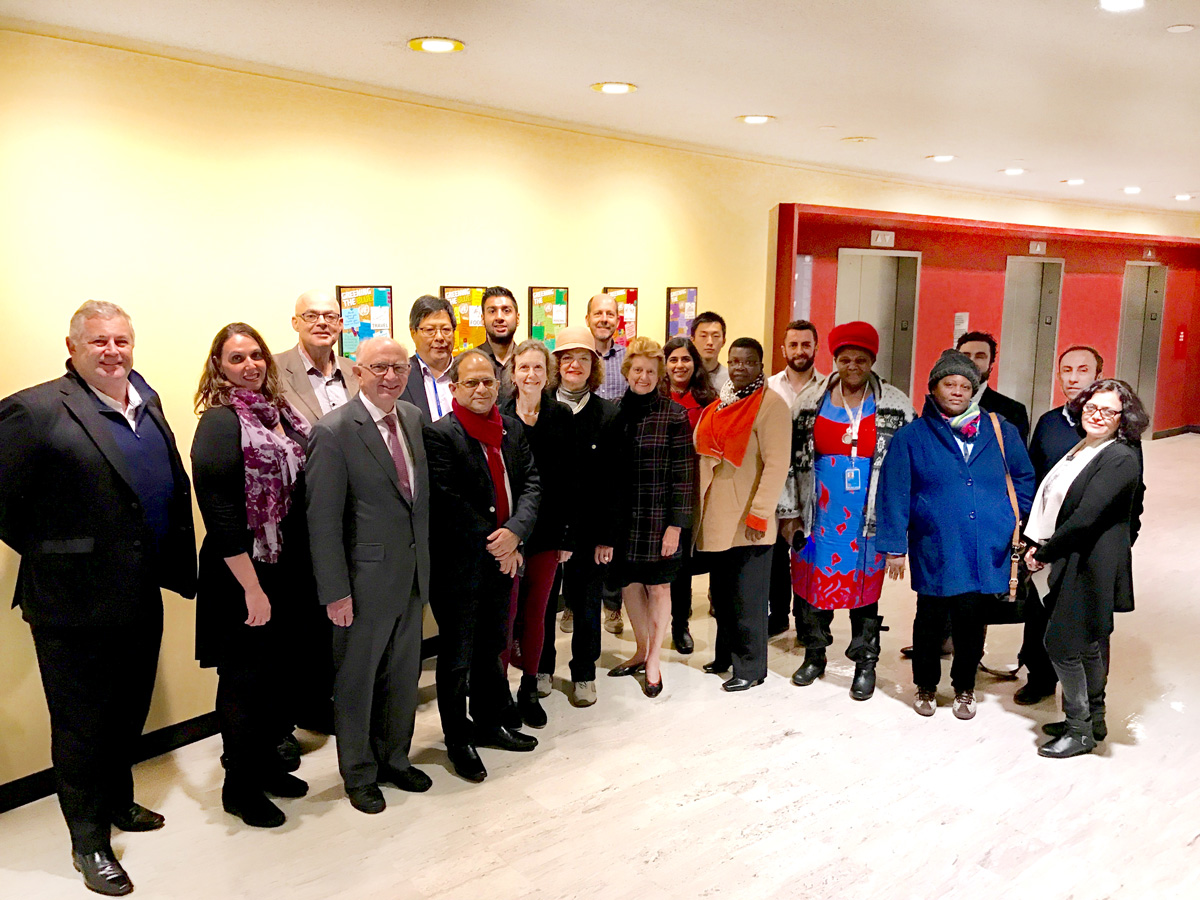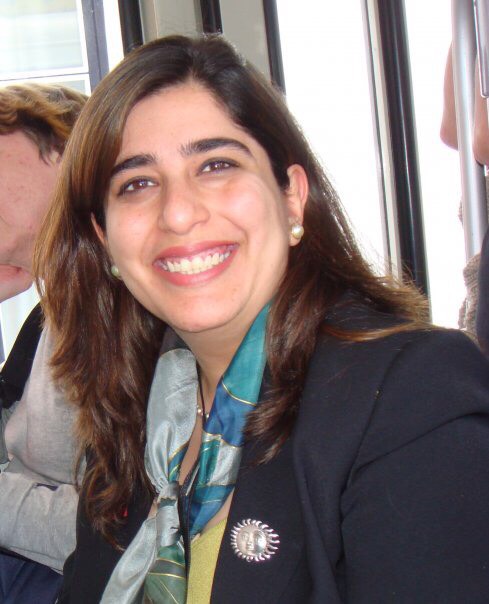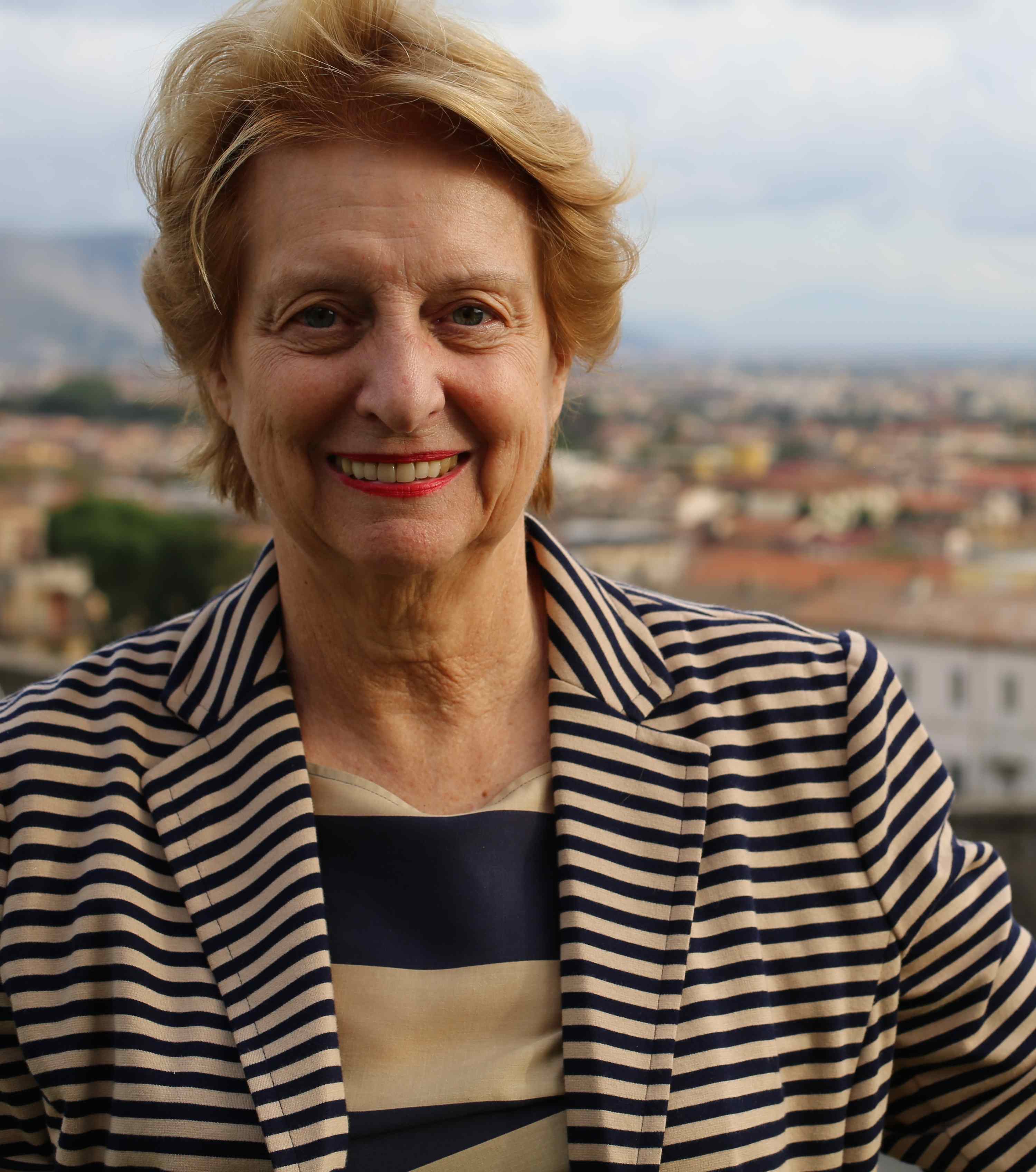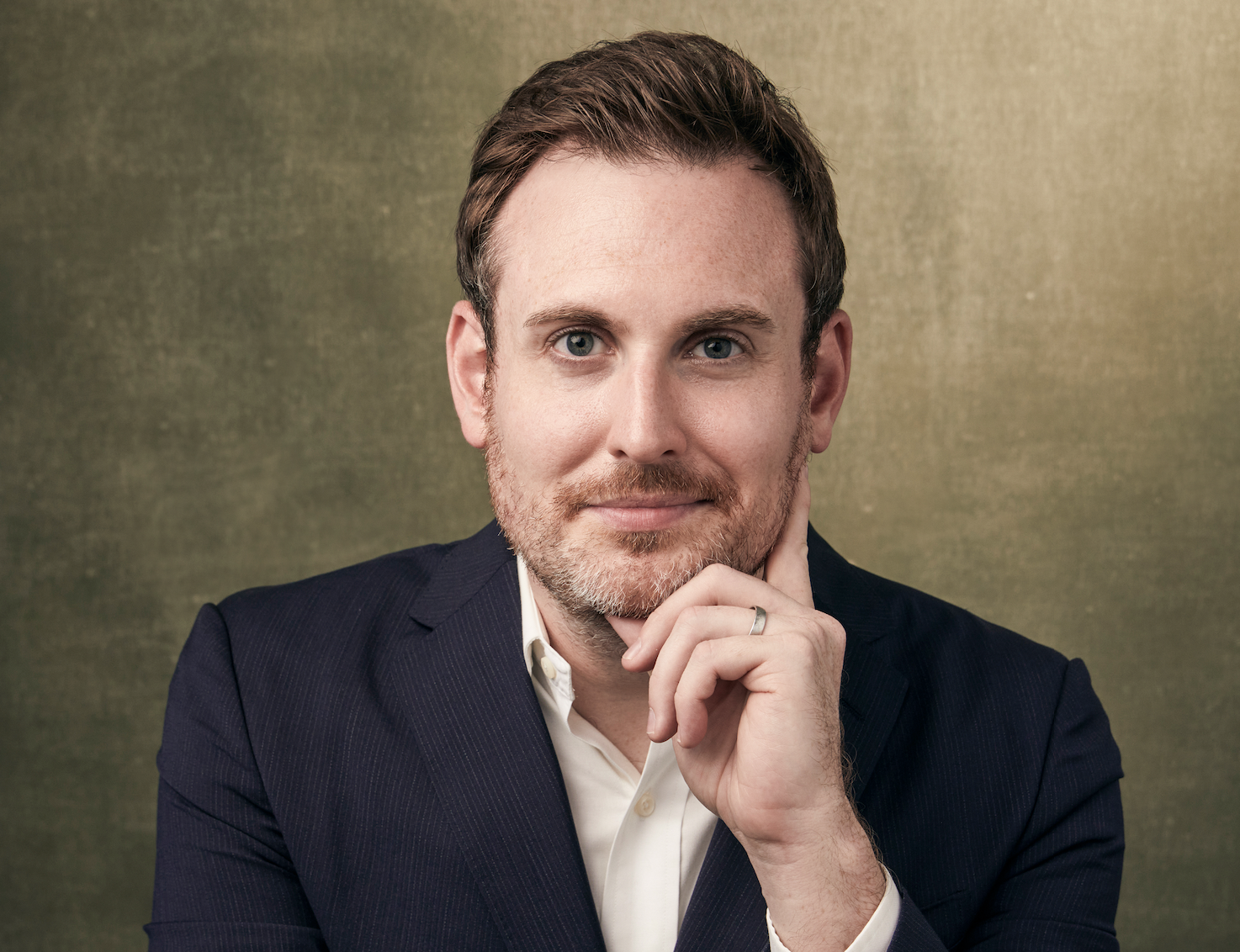
Photo: IMG_0070-low-res
How civil society can drive implementation of the New Urban Agenda
12 March 2017
by Jonathan Andrews
The role of the General Assembly of Partners (GAP), a new representative body for civil society, in the process leading up to the Habitat III meeting marked a watershed in how national governments can work with stakeholder groups. Richard Forster reveals how the next-generation GAP will not only provide a vital link between government and cities in terms of implementation of urban policy but could also serve as a template for multi-stakeholder cooperation across the entire UN system
While the Habitat III meeting in Quito last October may have put the seal on the New Urban Agenda, the key question now is how to ensure that the broad, some would say rather aspirational, statements in the Agenda are implemented in our cities over the next 20 years.
The Agenda itself has come in for some criticism for not being more focused on targets and how we might get to them.
“It doesn’t tell me as a local government official how I should do anything differently,” Debra Roberts, Chief Resilience Officer for the city of Durban told Reuters ahead of Habitat III, emphasising that national governments and urban policymakers need to engage much more with a wider range of actors such as civil society, business and academia.
This is particularly telling as chief resilience officers are the very people who are on the front line of implementing the New Urban Agenda.
Inspired by and created with funding from the Rockefeller Foundation in 2013, the role of a city’s chief resilience officer is to pull together a wide range of community stakeholders as well as the different silos of local government to change the way cities build resilience against economic shocks, social distress and inequality, and the environmental threats of climate change.
Cities as different as Accra and Rotterdam, or Amman and Washington DC, which are all part of Rockefeller’s 100 Resilient Cities initiative, are looking to the same model of local cooperation and while the New Urban Agenda can be criticised for its lack of targets or indicators, what it did achieve was a recognition that we need a similar and more inclusive model of local consultation by national governments.
Much of the credit for that lies with a new organisation–the General Assembly of Partners–which has emerged as a powerful vehicle to meet Roberts’ call for governments to consult more widely with stakeholders.
The General Assembly of Partners, or GAP, only came together formally for the first time at the Governing Council Meeting of UN-Habitat in Nairobi, Kenya in April 2015 with the idea of providing a combined voice for different stakeholder groups in the discussions leading up to the New Urban Agenda. From an initial group of 100 members, the GAP has grown in just 20 months to over 1,400 entities representing 1.1 billion people through 58,000 networks.
“Fully a third of those who participated [in Quito] had never been a UN stakeholder before,” says Genie Birch, president of GAP and Co-Director of the Penn Institute for Urban Research.
The success of GAP in representing different stakeholder groups (see box on page 50: Achievements and Milestones) was in marked contrast to Habitat II twenty years earlier where civil society had considered there were too many diverse interests to speak as one.
An inclusive approach
An initial innovation to make the group more inclusive and avoid fragmentation was to extend membership beyond the nine major groups of stakeholders recognised under the UN system and defined at the UN Conference on Environment and Development in 1992. The partners that Debra Roberts referred to like business and academia are members together with a diverse number of other groups many of whom had not seen eye to eye at previous meetings. (See end of article for full list of Partner Constituent Groups).

“We came up with 14 groups with particular relevance to cities and human settlements which naturally included the nine major groups but also others such as media which is treated as a constituent group and not as a mouthpiece, and foundations which were also brought into their own group not just as a facilitator of grassroots for example,” says Shipra Narang Suri, Vice-President of the GAP.
So a city like Durban can have input to the GAP through its membership of ICLEI, the global city association, whose representative Yunus Arikan co-chairs the local authorities group with Emilia Saiz, Deputy Secretary-General of UCLG. Both co-chairs are obliged to canvass the opinions of their city and local government members as well as other members of their Constituent Group. At the same time, the Rockefeller Foundation has a voice through the Foundations and Philanthropies Partner Constituent Group, which is co-chaired by Avina and the Ford Foundation.
Unlike the World Urban Campaign (WUC), a UN-Habitat led programme launched in 2009 from which the GAP’s original 100 members sprang, members could join the GAP constituent groups freely without the obstacle of needing clearance to sign agreements with a UN agency. As a result it was far more successful in galvanising a large and wide-ranging membership in a short space of time.
“GAP was set up in a sense to bypass that very bureaucratic mentality of the WUC and it snowballed a lot quicker than the WUC and than we imagined,” says Narang. “[For the World Urban Campaign] you have to enter into an MoU with UN-Habitat and that means there is an element of discretion and gatekeeping and decisions on who can get in so the idea of GAP was to be more inclusive.”
Having been granted a last-minute audience with UN Secretary General Ban Ki-moon during the Quito meeting, the GAP not only created history for such a multi-stakeholder group but realised that it had to continue to be part of the implementation and not just the formation of the New Urban Agenda.
As a result, its members voted at their plenary meeting in Quito to remove the expiration date from the constitution and to push on with a new agenda to carry forward the momentum and achievements of the group.
Nicholas You, Co-Chair of the Media Partner Constituent Group and a former senior policy advisor of UN-Habitat, and Katherine Kline, Co-Chair of the Older Persons Constituent Group, are leading a sub-committee that is drafting a new constitution for what has been termed GAP 2.0. You sees the GAP as fulfilling several important functions post-Habitat III.
“I think there is a very legitimate concern by civil society that somebody has to hold government to account for example, to ensure social inclusion and leave no one behind, and that is one part,” says You. “Another part is how do we accelerate the pace of implementation through the exchange of knowledge? We need to document innovation and the success stories and make that benefit the maximum number of people and institutions. Several partners are also keen to look at how we can put together a more robust monitoring system.”
The challenges of implementation
But while the GAP has broken new ground in terms of the role of stakeholder representation in an intergovernmental process, challenges remain on how effective it can be in terms of the implementation and monitoring of the New Urban Agenda.
In the first place, member states need to accept there is such a role. In the lead up to Quito, the GAP leadership worked hard to get the ear of national governments leading to recognition by name of the new organisation in the final document signed by member states.
“One thing which we have in the New Urban Agenda document itself is for national governments to commit to consulting and working with stakeholders when they report on the New Urban Agenda,” says Narang. “We did talk hard on issues such as a Right to the City but we gained their [member states’] respect not just their ear in the process because of our mobilisation, our persistence, and our willingness to play the game and not just hold placards.”

Genie Birch says the strong support from Joan Clos, Executive Director of UN-Habitat and in particular Ana Moreno, Coordinator of the Habitat III Secretariat, not only meant the GAP played an important advocacy role for the New Urban Agenda but it set the organisation on a course to assist with implementation.
“I believe that Ana Moreno had a vision of how to develop a platform that would be able to attract the kind of stakeholders that would be needed for Habitat III, for the conference itself, but also later that would be needed for the implementation stages,” comments Birch.
Birch says that Partner Constituent Groups are now entering a pilot phase to establish how they can assist on implementation by engaging with new partners on a local basis. Each group or PCG is going through a self-examination to identify how it can organise itself through its members and through partnerships with other constituent groups to go out to localities, create synergies around existing activities and relate these to the New Urban Agenda, and then bring that back to the national governments through communication and information exchanges to assist those governments in reporting on the implementation of the Agenda to the UN system.
Birch cites the example of the Older Persons Constituent Group group co-chaired by Katherine Kline, which is reaching out to the City of New York and other stakeholders who were not involved directly in the Habitat III process, to engage in discussions around existing activities on Age-Friendly Cities.
“She {Kline] is working with these groups to explain the New Urban Agenda to them so there is an alignment of what is happening locally with what is in the New Urban Agenda in terms of Age-Friendly Cities,” says Birch, who says there are similar initiatives by GAP members in New York on food systems and housing. “This serves as an example of how one takes a global set of recommendations and drives them right down to local activities.”
In terms of the GAP’s role in monitoring governments, matters are much less clear both in terms of national governments’ recognition of this role and how the GAP itself may organise the groups to make governments accountable.
“We were saying [during the preparatory sessions] that investments made in pursuit of the New Urban Agenda goals should be monitored by multi-stakeholder advisory committees and member states stood up and said: ‘What are you talking about?!’” says Narang. “But the seed has been planted and if a couple of progressive national governments take it up then we could show how it could actually work.”
A second more prosaic challenge is that someone needs to pay for the work of GAP.
Nicholas You says the biggest obstacle to raising finance for the GAP is that the organisation has no legal personality so it cannot even have a bank account. For its activities and input leading up to the Habitat III meeting, the Habitat III Secretariat, which had its own budget for stakeholder collaboration in the Habitat III process, provided funding and travel support for the meetings of the GAP Executive Committee members (the two co-chairs of each Constituent Group).
Since Quito, the Executive Director of UN-Habitat Joan Clos has offered to support future meetings in a similar way. That offer has yet to be accepted but You says there will be changes in the way members work together post-Quito and that may well help get round the lack of legal personality which prevents GAP raising funds.
“What I have tried to look to with the draft of the new constitution is that we should behave like a coalition of partners and to allow two or more partners to coalesce and to mobilise resources for activities that support the implementation of the New Urban Agenda and that those activities be considered legitimate activities of GAP,” explains You.
Birch stresses that the GAP members must show their worth before finance and support falls into place and recognises that the pilot phase for activities by the different Partner Constituent Groups will be crucial in demonstrating an active role for GAP in implementing the New Urban Agenda with national governments.
“We are in a pilot stage on how we can best use the capabilities of the GAP for the New Urban Agenda and how we can bring something to the table in terms of implementation and we have to show we have something to ‘sell’,” says Birch.
The third and perhaps greatest challenge for the GAP relates to human nature and what Shipra Narang calls the process of “herding cats”. A group that brings together business with trade unions, or local authorities with grassroots, will inevitably lead to exchanges of very different viewpoints and inevitable tensions. In the run up to Quito, the GAP held together well and one reason for its success was that the different parties did not have to reach consensus on all matters and were free to advocate on their own particular issues.
“The big reassurance that people had in this process was that GAP was not going to be a gatekeeper so even if people agreed to certain positions with us they would not be blocked from advocating on other issues independently,” explains Narang.
Post-Quito–and perhaps as a victim of its own success–relations have not been so cordial. Following a leak by members of the Children and Youth Constituency Group that the GAP President Genie Birch was applying to trademark the words General Assembly of Partners, a lawyer’s letter was sent to the UN Office of Internal Oversight Services and the President of the UN Economic and Social Council to instigate action against Genie Birch on the basis that she had done this for personal gain and without due authorisation. The same letter was also sent to the German and Kenyan Permanent Representatives at the United Nations.
Birch had undertaken the application personally because the GAP itself has no legal status nor a permanent address, as was required under US law to register the trademark. However, the letter of action against Birch suggested she was seeking to profit from exploitation of the name, which appears absurd both in the lack of commercial opportunities that such a group
affords (GAP T-shirts anyone?) and her cognisance as president that any such exploitation could only be done under the authority of the GAP itself, if and when any mark was granted.
As one source noted, some members from the Youth side of the Children and Youth Group’s had clearly felt GAP was getting too big for its boots and as one of the nine major UN stakeholder groups, they chose to undermine and discredit the GAP by attempting to bring it into disrepute with the United Nations itself through the claim brought against Birch.
At their most recent meeting in New York on January 22-23, GAP Executive Committee members voted 14 to 1 to continue the trademark application (one co-chair of the Children and Youth Group dissented; Foundations and Philanthropies never exercises a vote in GAP meetings regardless of the topic).
While GAP members have roundly dismissed the action by joint letter and fully supported Birch, who has been investigated and cleared completely of any wrongdoing, the disruptive action has had consequences on the GAP’s freewheeling membership and voting procedures.
“Unfortunately the people who were behind the leak to the Permanent Representatives [of the UN] were members of GAP and that is part of the reason why in the new version of the constitution we will have to put into place some sort of vetting process and a clause which will enable the suspension of people who misbehave,” says You. “But overall, we want to GAP to be open as possible, to provide as many people and stakeholder groups with a voice going forward.”
Another more compelling reason for amending the constitution is that the role of GAP has changed with the need to implement rather than design the New Urban Agenda.

“We are in a new phase where the multitude of people that are required for implementation of the New Urban Agenda is far greater than those that may have taken part in the intergovernmental process,” says You. “Similarly the centre of gravity will not just be New York–it will shift to regions and nations and subnational spaces and we need more flexible decision-making processes–for example decisions to be made by two-thirds or a simple majority. We will continue to seek consensus but we also have to realistic.”
As Birch emphasises it is important that the GAP empowers and insists that the co-chairs of its Executive Committee (the Ex Co is 32 people representing the 16 groups) communicate with their partnership groups so that it becomes a representative democracy having consulted with all members on the issues at hand.
“What we are proposing now is that the plenary or full General Assembly of Partners will set the agenda and propose the issues which need to be discussed and the Ex Co will make the decisions and vote as necessary,” says You. “Otherwise you can have a single member with the same voting power as say a large association representing thousands of members or hundreds of local authorities and millions of inhabitants.”
With the legal challenge petering out, and the GAP and its leadership having seen off bigger challenges, including member states who were supporting GAP and who then reversed their positions just before Habitat III, it is clear that in adversity, the GAP has grown. So how far can it go?
Shipra Narang says her long-term vision is for the General Assembly of Partners to become part of the UN system.
“With ESCAP [the UN Economic and Social Commission for Asia and the Pacific] we have put this on the table for them to seriously consider for their regional committee meetings to use the 16 member group template,” says Narang. “Once it gets traction at that level and with the new leadership of UN as well as I am hopeful that this will get picked up and people will ask why we are sticking to the nine regional groups. This may well become the inspiration for a system-wide reform on stakeholder involvement.”
Clearly, the GAP can play an important role in the stakeholder consultation that Durban’s Debra Roberts highlighted. After becoming chief resilience officer of Durban, Roberts was invited to join the Intergovernmental Panel on Climate Change where she has been an active voice on how important cities and local governments are to mitigation and adaptation strategies. It would be fitting to see the GAP also solidify its place in the intergovernmental system and change the dynamic for cities in terms of a wider representation of all residents.
Who are the General Assembly of Partners?
The 16 Partner Constituent Groups represent:
- Local and Subnational Authorities
- Research and Academia
- Civil Society Organisations
- Grassroots Organisations
- Women
- Parliamentarians
- Children and Youth
- Business and Industries
- Foundations and Philanthropies
- Professionals
- Trade Unions and Workers
- Farmers
- Indigenous People
- Media
- Older Persons
- Persons with Disabilities
GAP achievements and milestones
April 2015: A constitution is approved at the formal launch meeting in Nairobi for a new organisation with 14 stakeholder groups to be called the General Assembly of Partners.
October 2015: Second GAP meeting in New York. Partnership Constituent Group Chairs’ Handbook approved.
March 2016: GAP hosts its third plenary in Prague and membership rises to 900. A new Partnership Constituent Group (the fifteenth) is added for Older Persons.
May-June 2016: Partner groups of GAP have input to the intergovernmental informal sessions in New York.
July 2016: Third Gap plenary meeting in Subaraya during Habitat PrepCom3 meeting. Sixteenth Partnership Constituent Group added for Persons With Disabilities.
September 2016: The draft of the New Urban Agenda is agreed by national governments and includes, as well as input on specific clauses from GAP, a reference to the role of the General Assembly of Partners in paragraph 128.
October 2016: GAP advocacy results in unprecedented profile for stakeholder groups during Habitat III meeting:
- The GAP president and vice president are invited to offer comments at the Opening and Closing Plenaries in front of member states.
- The conference organisers allocate 16 seats in the plenary to the GAP constituent groups (as opposed to 9 for major groups and 3 for other stakeholders)
- Members of the GAP Executive Committee are invited to a private meeting with UN Secretary-General Ban Ki-moon.
The GAP Executive Committee met at the United Nations Headquarters at the end of January to delineate its programmes for the next five years. Attendees pictured (L-R): Greg Budworth (Compass Housing, Australia), co-chair Civil Society; Mary Rocco, GAP co-ordinator at Penn IUR; Bert Smolders, (Arcadis, The Netherlands) co-chair, Business and Industry; Peter Goetz (former member German Parliament) co-chair, Parliamentarians; Nicholas You (Citiscope, Kenya), co-chair, Media; Ishtiaque Zahir (IUIA, Bangladesh)co-chair, Professionals; Ali Kahn (European Foundation Center, Belgium) co-chair, Foundations; Jane Katz (Habitat for Humanity, USA) co-chair Civil Society; Magadalena Garcia Hernandez (Bufetede Estudios, Mexico) co-chair, Women; Eugenie Birch (University of Pennsylvania, USA) president, GAP; Shipra Narang Suri (ISOCARP, India) vice president, GAP; Hirotake Koike (C&Y Habitat III) co-chair, Children and Youth; Mildred Crawford (Jamaica Network of Rural Women Producers, Jamaica), co-chair, Farmers; Sion Jones, HelpAge, UK) co-chair, Older Persons; Violet Shivutse, Shibuye Community Health Workers, Kenya) co-chair, Farmers; Ana Lucy Bengachoa (Plataforma Comunitaria Comité y redes de Honduras Waguch, Honduras) co-chair, Indigenous Peoples, Mohammed Ali Loufty (partially hidden) (American University, USA), co-chair, Persons with Disabilities; Enrique Silva (Lincoln Institute of Land Policy, USA), co-chair, Research and Academia; Joyati Das (World Vision International, Australia), co-chair, Children and Youth.








